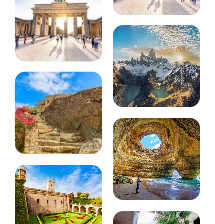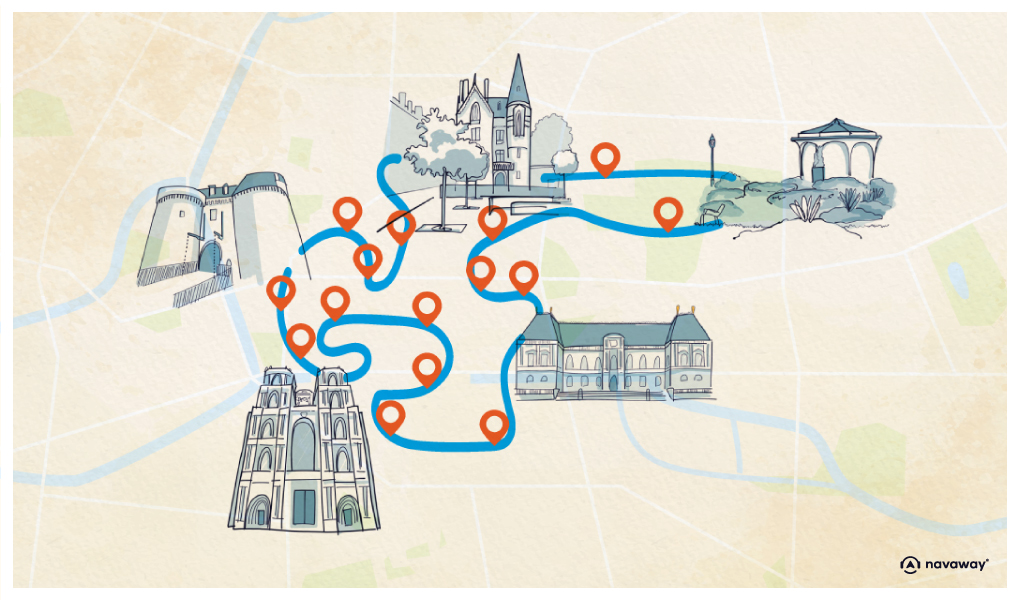
How can I visit Mont-Saint-Michel Abbey?
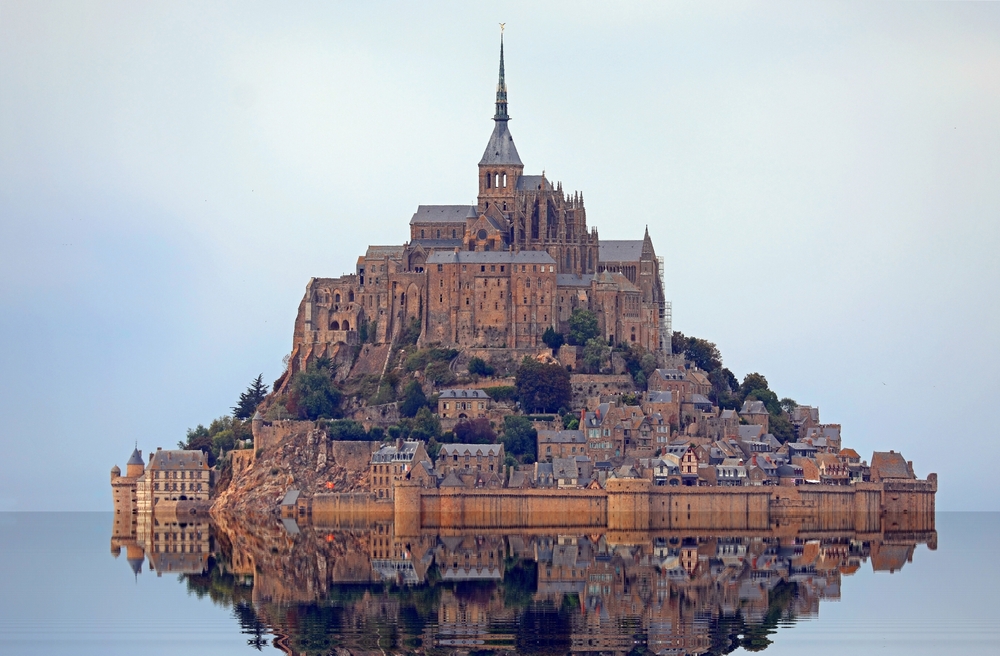
Perched atop a rocky islet battered by the highest tides in Europe, the Abbey of Mont-Saint-Michel has fascinated visitors for over a thousand years. This masterpiece of medieval architecture, a UNESCO World Heritage Site, attracts nearly 3 million visitors every year from all over the world. With its thousand-year-old legends, architectural feats and breathtaking scenery, a visit to Mont-Saint-Michel Abbey is an unforgettable experience that plunges you into the heart of French history.

See also the Rennes guide :
- Top 10 culinary specialities in Rennes
- Top 6 activities in Rennes
- The 10 best bike rides in Rennes
- 6 must-do activities in Rennes
- The most beautiful villages to visit around Rennes
- 10 must-see places to visit in Brittany
- 12 unusual romantic weekends in Brittany
- The most beautiful villages to discover around Saint-Malo
Why visit Mont-Saint-Michel Abbey?
The Abbey of Mont-Saint-Michel is much more than just a historic monument. It is an architectural wonder that has defied the laws of gravity for over a thousand years. Imagine a monumental edifice built on top of a 92-metre-high rock, surrounded by the highest tides in Europe, which can reach 14 metres. This technical and artistic feat bears witness to the genius of the builders of the Middle Ages.
Listed as a UNESCO World Heritage Site since 1979, the abbey embodies the quintessence of Gothic and Romanesque art. Its majestic silhouette, instantly recognisable, is silhouetted against the horizon, creating a striking spectacle depending on the tides and the light. The “Wonder of the West”, as it is known, is home to some exceptional architectural treasures: the suspended cloister with its fine columns, the refectory bathed in light, the Salle des Chevaliers with its majestic vaults, and the mysterious Romanesque crypts.
As well as its remarkable architecture, the abbey is steeped in a fascinating history stretching back thousands of years. A place of pilgrimage since the Middle Ages, an impregnable fortress during the Hundred Years’ War, a prison during the French Revolution, it has survived the centuries by preserving its spiritual soul. Even today, a community of monks and nuns carry on the monastic tradition, adding a lively dimension to your visit. If you want to visit Rennes, you can easily organise a day trip to Mont-Saint-Michel, less than an hour’s drive from the Breton capital.
What to see and do at Mont-Saint-Michel Abbey?
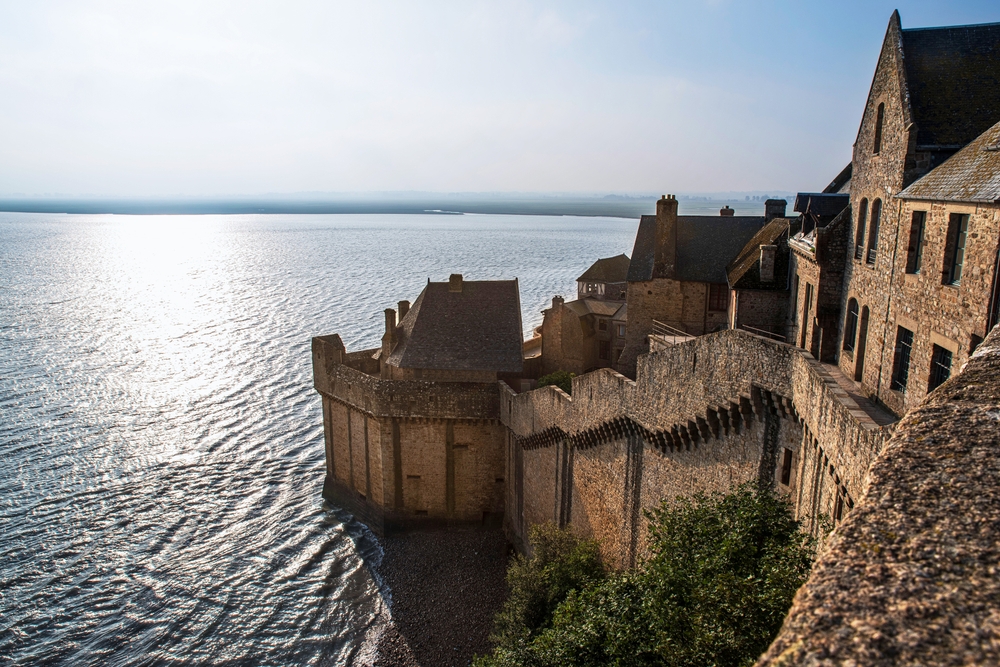
1. The abbey church: a Gothic jewel
At the top of the abbey stands the abbey church, a veritable architectural feat built between the 11th and 16th centuries. Dedicated to the archangel Saint Michael, this church is an elegant blend of Romanesque and flamboyant Gothic styles. Its slender arches, finely sculpted side chapels and luminous choir create an atmosphere conducive to meditation. From the forecourt, the panoramic view over the bay is simply breathtaking, offering a spectacle that changes with the tides. The majestic proportions of the building and the exceptional quality of its sculptures make it one of the finest examples of medieval sacred architecture.
2. The cloister: a suspended haven of peace
The 13th-century cloister is one of the abbey’s most enchanting spaces. A veritable garden suspended above the sea, this place of meditation for the Benedictine monks is captivating in its delicacy and elegance. The slender columns of pink granite from Brittany, arranged in staggered rows, create a fascinating interplay of light and shadow. The plant sculptures adorning the capitals bear witness to the talent of medieval craftsmen. From the galleries of the cloister, the panorama over the Bay of Mont-Saint-Michel is absolutely breathtaking, offering a unique perspective on this landscape in perpetual motion.
3. The refectory: the alliance of light and stone
The monks’ refectory, dating back to the 13th century, impresses with its exceptional luminosity. This immense vaulted room, 27 metres long, was once the setting for the monastic community’s silent meals. The tall, narrow windows, invisible from the inside, bathe the space in a soft, even light that seems to come from nowhere. Slender pillars support bold vaults, creating an atmosphere that is both sober and solemn. The site bears witness to the austere life of the monks, punctuated by prayer, work and the spiritual readings that accompanied their meals.
4. La Merveille: a Gothic masterpiece
La Merveille refers to the Gothic architectural complex built on the north face of the rock in the 13th century. This prestigious name perfectly describes the three superimposed levels that defy the laws of balance. On the ground floor, the cellar and chaplaincy welcomed pilgrims and visitors. On the first floor, the Salle des Hôtes received high-ranking personalities, while the Salle des Chevaliers, with its imposing vaults supported by sturdy pillars, served as a scriptorium for the monk copyists. At the top, the cloister and refectory crown this unique ensemble. The audacious structure of the Merveille, built in just seventeen years, represents one of the greatest feats of medieval architecture.
5. The crypts: the mystical heart of the abbey
Beneath the abbey church, a network of Romanesque crypts supports the edifice, creating spaces of mysterious contemplation. The 11th-century crypt of Saint-Martin fascinates visitors with its massive barrel vaults and contemplative atmosphere. The Gros Piliers crypt, built in the 15th century to support the new Gothic choir, impresses with the power of its monumental columns. These underground spaces, bathed in subdued light, offer a striking contrast to the luminosity of the upper parts of the abbey. They are a reminder that monastic spirituality was deeply rooted in the stone and earth of the Mont.
6. The Salle des Chevaliers and the Salle des Hôtes
These two medieval halls are jewels of monastic architecture. The Knights’ Hall, contrary to what its name suggests, served as a scriptorium where the monks copied and illuminated manuscripts. Its four naves with quadripartite vaults create a majestic space bathed in light. The two imposing fireplaces bear witness to the monks’ concern for comfort during the long Breton winters. The Salle des Hôtes, meanwhile, welcomed distinguished visitors. Its refined architecture, with its slender columns and elegant vaults, demonstrates the importance attached to hospitality in the Benedictine rule. These spaces illustrate the abbey’s dual vocation: spiritual and intellectual.
7. Terraces and exceptional views
The abbey’s terraces offer spectacular views over the bay of Mont-Saint-Michel and its famous high tides. From the top of the ramparts and the different levels of the abbey, you can contemplate a landscape in perpetual transformation. At low tide, the bay is transformed into a desert of sand stretching as far as the eye can see. At high tide, the waters encircle the Mont, giving it back its original island character. The play of light over the bay, particularly at sunrise and sunset, creates magical atmospheres that photographers from all over the world come to immortalise. These grandiose panoramas allow you to fully grasp the exceptional dimension of the site.
Download the audio-guided tour to discover Rennes on foot and on your own
To extend your discovery of the region, download our audioguide tour of Rennes, which will allow you to explore the Breton capital on your own. With 25 fun audio guides, discover Rennes’ historical treasures, colourful half-timbered houses, majestic Parliament of Brittany and lively squares. The Navaway application guides you step by step through the medieval streets and emblematic districts of this charming city, just 50 minutes from Mont-Saint-Michel.
The fascinating history of Mont-Saint-Michel Abbey
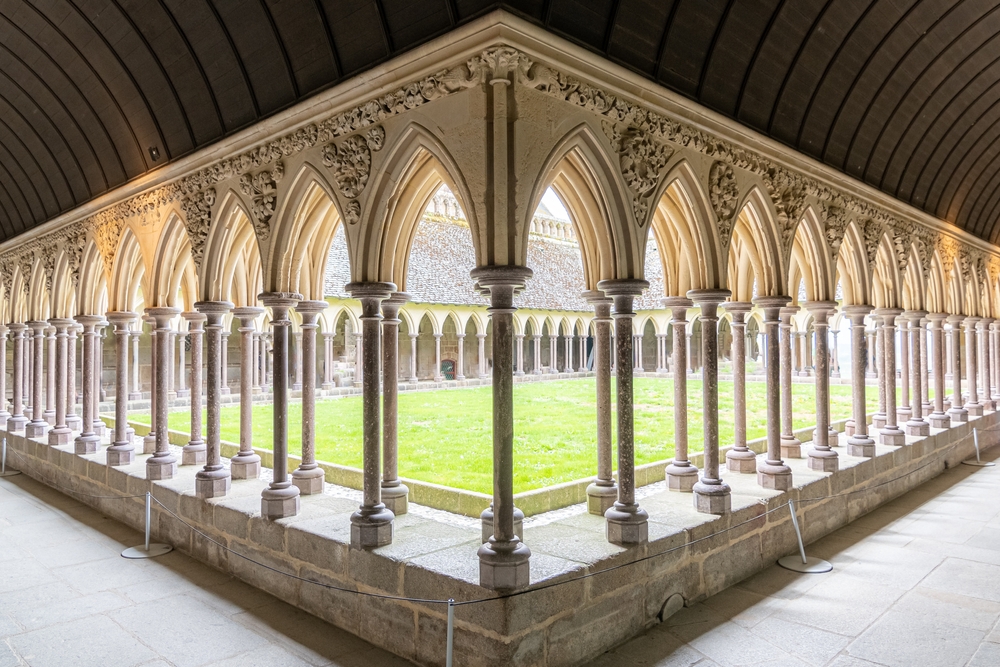
708: the vision of Bishop Aubert
The history of the abbey began in 708 with a divine apparition. Bishop Aubert of Avranches was visited three times in a dream by the archangel Saint Michael, who ordered him to build a sanctuary on Mont Tombe, a rocky islet battered by the tides. According to legend, the archangel even touched the bishop’s forehead with his finger to convince him, leaving a hole in his skull, a relic that is now preserved in the Basilica of Saint-Gervais in Avranches. This miraculous foundation has made Mont-Saint-Michel one of the oldest Christian pilgrimage sites in the West, attracting crowds of pilgrims from all over Europe since the Middle Ages.
The Middle Ages: the monastic apogee
Between the 11th and 16th centuries, the abbey experienced its architectural and spiritual golden age. The Dukes of Normandy and then the Kings of France vied with each other in their generosity towards the monastery. It was during this period that the main buildings for which the Mont is renowned today were erected: the Romanesque abbey church, followed by the Gothic Merveille in the 13th century, and finally the flamboyant Gothic choir, completed in 1523. The abbey became a leading intellectual centre, housing a prestigious library and a renowned scriptorium. During the Hundred Years’ War, the Mont heroically resisted the English assaults, becoming a symbol of French resistance and reinforcing its patriotic dimension.
From prison to spiritual rebirth
The French Revolution marked a dramatic turning point in the history of the abbey. In 1793, the monks were expelled and the Mont was transformed into a state prison, ironically nicknamed the “Bastille of the Seas”. Hundreds of political prisoners were held there in deplorable conditions until 1863. This dark period left its mark: the buildings were dilapidated, and floors were laid in the Gothic halls to create cells. Fortunately, in 1874, the abbey was listed as a historic monument and major restoration work was undertaken. In 1969, monks and nuns returned to settle at Le Mont, reviving the original spiritual vocation of the site. Today, the monastic community continues to pray and welcome visitors, keeping alive the soul of Mont-Saint-Michel.
Opening times and prices for visiting Mont-Saint-Michel Abbey
Abbey opening times
Mont-Saint-Michel Abbey is open all year round, with the exception of three public holidays. From 1 May to 31 August, the doors are open from 9am to 7pm, with a last admission at 6pm. From 1 September to 30 April, opening times are slightly reduced: from 9.30am to 6pm, with the last admission at 5pm. The abbey closes exceptionally on 1 January, 1 May and 25 December. It is strongly recommended to arrive early in the morning or late in the afternoon to avoid the crowds, particularly during the school holidays and in summer. Visitors wishing to attend religious services celebrated by the monastic community are free to do so, while respecting the contemplative atmosphere of the place.
Admission fees and free admission
Admission to the abbey is €13 for adults. One of the remarkable features of Mont-Saint-Michel is that it is completely free of charge for young people under the age of 26 who are nationals of the European Union or legal residents outside the EU. This measure allows families and young visitors to discover this exceptional heritage without financial constraints. The abbey is also open to the public on the first Sunday of each month, from November to March inclusive, offering a great opportunity for free visits in the low season. Themed guided tours are available for a supplement of €7.50 for adults and €6 for 7-17 year olds. Audio guides are available to hire for €5, enabling visitors to enjoy a self-guided tour with detailed historical and architectural explanations.
How do I get to Mont-Saint-Michel?

Access by car and parking
Mont-Saint-Michel is around 1 hour’s drive from Rennes and 3? hours from Paris via the A11 and then the A84. Since 2012, the Mont is no longer directly accessible by car. You must park in the official car parks located 2.5 kilometres from the rock. These car parks, which have a capacity of 4,000 spaces, are open 24 hours a day and offer a sliding scale of charges depending on the season: expect to pay around €14 for 24 hours in low season, €16 in mid season and up to €22 in high season. Special pitches are available for motorhomes at a higher rate. Once parked, there are three options for getting to the Mont: the free “Le Passeur” shuttle bus (12-minute journey), walking (about 45 minutes along the dyke) or horse-drawn carriages (subject to availability).
The free “Le Passeur” shuttle service
The “Le Passeur” shuttle bus is the quickest and most practical way to get to the Mont from the car parks. This free service operates continuously from 7.30am to midnight, with departures every 15 minutes or so, depending on how busy it is. The shuttles are accessible to people with reduced mobility and can carry pushchairs. They drop you off 350 metres from the entrance to the medieval village, at the foot of the ramparts. The 12-minute journey allows you to admire the exceptional panoramic view over the bay and to gradually see the majestic silhouette of Mont-Saint-Michel coming closer. During periods of high tide, the shuttles stop temporarily when the water covers the access road, creating an impressive natural spectacle in which the Mont becomes a veritable island once more.
Other means of transport
For those who prefer public transport, there are several options. There are regular bus services to Mont-Saint-Michel from Rennes (line 2), Pontorson and Dol-de-Bretagne. The nearest SNCF stations are Pontorson (9 km) and Dol-de-Bretagne (23 km), from where dedicated shuttle buses depart. A number of companies also offer organised excursions from Paris, Saint-Malo, Rennes or Caen, including transport and sometimes a guided tour. For the more sporty, access on foot from the car parks via the footbridge offers a memorable experience, particularly at sunrise or sunset, when the light sublimates the bay of Mont-Saint-Michel.
Practical tips for a successful visit
Best time and length of visit
Mont-Saint-Michel can be visited all year round, but each season offers a different experience. Spring and autumn are the ideal periods, with pleasant temperatures and fewer visitors than in summer. Winter offers the advantage of a rediscovered authenticity, despite the sometimes harsh climate. The high tides, which occur 36 to 48 hours after the full and new moons, offer an extraordinary natural spectacle, with the Mont once again becoming an island encircled by the waves. To get the most out of your visit, allow at least 2 to 3 hours: around 1? hours for the abbey itself, and the rest for wandering around the medieval village and the ramparts. The most enthusiastic visitors will easily be able to devote a whole day to the visit, including a lunch break and an in-depth exploration of every corner of the Mont.
Recommended equipment and preparation
Visiting the abbey involves a number of narrow steps and passages, some of which are slippery. Comfortable, non-slip footwear is therefore essential. You should also bring clothing suited to the changing weather conditions: the Bay of Mont-Saint-Michel is exposed to sea winds, which can be strong, even in summer. A windbreaker or small jacket is always useful. In winter, temperatures can be cool inside the abbey despite its southern exposure. For photographers, remember to check the tide times and the weather to optimise your shots. A wide-angle lens will be particularly useful for capturing the scale of the interior and the panoramic views over the bay. Finally, although the abbey has a cafeteria, we recommend that you take a bottle of water with you, especially in summer.
Avoiding the crowds: insider tips
Mont-Saint-Michel welcomes almost 3 million visitors a year, which can make for an uncomfortable visit at peak times. To enjoy the site in the best possible conditions, it’s best to arrive very early in the morning (as soon as it opens at 9am or 9.30am, depending on the season) or in the late afternoon after 5pm. The months from November to March, outside the school holidays, offer a much more peaceful and authentic atmosphere. Tuesdays, Wednesdays and Thursdays are generally less busy than weekends. If at all possible, avoid the May bank holidays and the summer holidays, particularly July and August. Book your ticket online to avoid queuing at the ticket office. Finally, for a truly unique experience, consider spending a night on the Mont: very early in the morning or late at night, when most tourists have left, you’ll discover a magical and mysterious Mont-Saint-Michel.
You can also take advantage of your stay in Brittany to discover other regional wonders thanks to Navaway tours. Our audio guide application accompanies you on your visits to Rennes and the most beautiful towns in Brittany, allowing you to explore the historical and cultural riches of this fascinating region at your own pace.
What to do around Mont-Saint-Michel Abbey?

Explore the medieval village
The village of Mont-Saint-Michel, nestling between the ramparts and the abbey, is well worth a visit in its own right. The Grande Rue, a steep cobbled main street, winds its way between half-timbered houses dating from the 15th and 16th centuries. This picturesque street is home to numerous local craft shops, art galleries and famous restaurants serving local specialities, including the famous Mère Poulard omelette and salt-meadow lamb. Don’t miss the parish church of Saint-Pierre, built between the 15th and 17th centuries and home to a statue of Saint Michel slaying the dragon. The ramparts offer an accessible walkway around the Mont, with spectacular views over the bay at different times of the day.
Crossing the bay
One of the most memorable experiences at Mont-Saint-Michel is undoubtedly crossing the bay on foot, accompanied by a certified guide. These professionals know all about the dangers of the bay: quicksand, fog, fast-rising tides. A crossing generally takes 2 to 3 hours, and allows you to discover the exceptional flora and fauna of this unique environment, the rivers that meander through the sand, and to approach the Mont from the sea as medieval pilgrims did. The spectacle of the rising tide, which can advance “at the speed of a galloping horse” according to legend, is truly impressive. This activity, which can be enjoyed from April to October depending on the tidal range, is suitable for families with children aged 6 and over and requires no particular physical fitness.
Nearby corsair towns
The Mont-Saint-Michel region is full of treasures to discover. A 40-minute drive away, the corsair town of Saint-Malo will win you over with its majestic ramparts, magnificent beaches and rich maritime heritage. Cancale, 30 minutes away, is an oyster-lover’s paradise, where you can sample the shellfish directly from the producers, overlooking the bay. Further south, don’t miss Fougères and its imposing medieval castle, one of the largest and best preserved in Europe. The town of Dinan, 45 minutes away, will charm you with its perfectly preserved medieval centre, its half-timbered houses and its marina on the River Rance. Finally, Rennes, the Breton capital less than an hour away, is well worth a visit for its remarkable historic centre, its Parliament of Brittany and its dynamic student atmosphere.
In conclusion, a visit to Mont-Saint-Michel Abbey is much more than a simple tourist excursion: it’s a journey through time that takes you to the heart of the Middle Ages, where you’ll encounter a thousand years of spirituality and exceptional architecture. Between the majestic vaults of the Merveille, the mysterious crypts, the suspended cloister and the breathtaking views over the bay, every corner of the abbey tells a fascinating story. Whether you’re a history buff, a lover of architecture, a believer in search of spirituality or simply curious to discover one of France’s most emblematic sites, Mont-Saint-Michel will fill you with wonder. Don’t forget to round off your stay in Brittany by exploring the surrounding towns with our Navaway audio tours, which will allow you to discover all the treasures of this magnificent region at your own pace.
FAQ: your questions about Mont-Saint-Michel Abbey
How long does it take to visit the abbey?
Allow around 1? to 2 hours for a complete visit to Mont-Saint-Michel Abbey. This time will allow you to explore the main rooms, the cloister, the abbey church and enjoy the panoramic views from the terraces. If you would like an in-depth visit with an audioguide or lecture tour, allow 2? to 3 hours. Don’t forget to add time to wander around the medieval village and the ramparts.
Is the abbey accessible to people with reduced mobility?
Access to the abbey is unfortunately limited by its medieval architecture. The site has numerous staircases (around 350 steps), narrow passageways and multiple levels. Some parts are nevertheless accessible to wheelchair users, notably the abbey church. It is advisable to contact the abbey in advance to find out about the possibilities of adapted access and to benefit from special assistance.
Is the abbey free to visit?
Yes, there are several options for visiting Mont-Saint-Michel Abbey free of charge. Admission is free all year round for under-26s (EU nationals or legal residents outside the EU). In addition, the abbey opens its doors free of charge to all visitors on the first Sunday of each month, from November to March inclusive. These arrangements enable as many people as possible to discover this exceptional heritage.
Do I need to book a visit in advance?
Booking is not compulsory but is strongly recommended, particularly in the high season (May to September) and during school holidays. By booking online, you can avoid queuing at the ticket office and ensure that you can visit the abbey at the time you want. Visitors without a reservation may have to wait a long time, or even not be allowed in if the maximum number of visitors is reached.
Can I attend a mass at the abbey?
Yes, the monastic community of the Monastic Fraternities of Jerusalem celebrate daily services in the abbey. Mass is sung every day at 12.15pm, except Mondays, and on Sundays at 11.15am. Access to the services is free for the faithful who wish to take part in the prayer. Visitors are asked to respect the sacred nature of these celebrations. These moments offer a unique spiritual dimension to the discovery of Mont-Saint-Michel.
Is Mont-Saint-Michel really accessible at high tide?
Yes, Mont-Saint-Michel remains accessible in all circumstances thanks to the footbridge inaugurated in 2014. This structure allows access to the Mont to be maintained even during the highest tides, while allowing the water to flow freely underneath. During exceptional tidal coefficients (above 110), the esplanade in front of the Mont may be temporarily submerged, creating an impressive spectacle, but the village and abbey remain accessible at all times via the raised bridge. This modern system has made it possible to reconcile permanent accessibility to the site with the preservation of the unique maritime character of the Mont.
200 audioguided tours for cities all around the world
Download